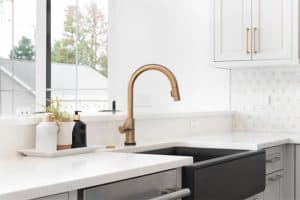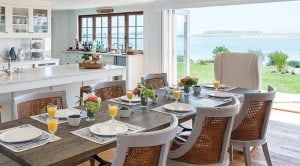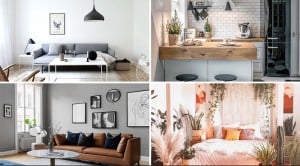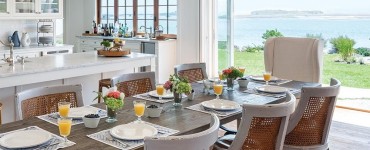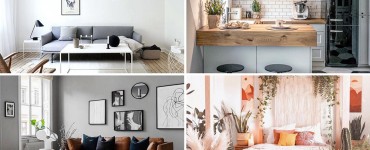Though the term transition refers to a shift of anything, it has a different meaning when used for the interior designing concept. In simple words, the transitional style can be explained as an option that is a combination of both traditional as well as modern designing.
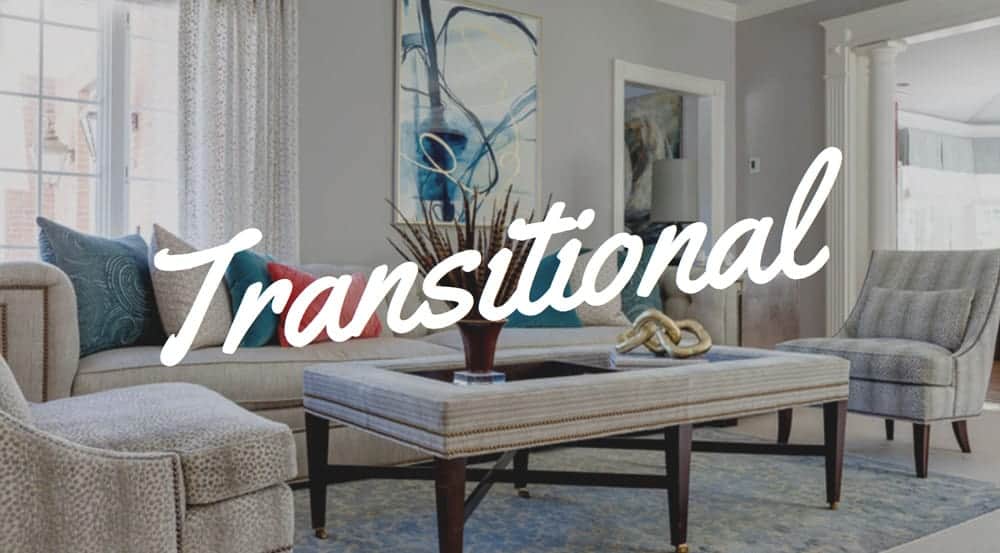
A number of people have this question of why exactly such transitional design is in need. One of the most common answers to this is the trend. The transitional style is high in trend today because people do not have to choose from the modern and the traditional styles completely.
You can conveniently keep both the styles and can have great interior design. But this does not mean that it is going to be an easy task. Having a transitional style for your interior also needs a good amount of planning.
What Is Transitional Style Interior Design?
Transitional style comes from the word transition, meaning moving from one thing to another, or evolution. How this manifests in interior design is the mingling of two different styles, the classic and the contemporary, evolving into one cohesive design.
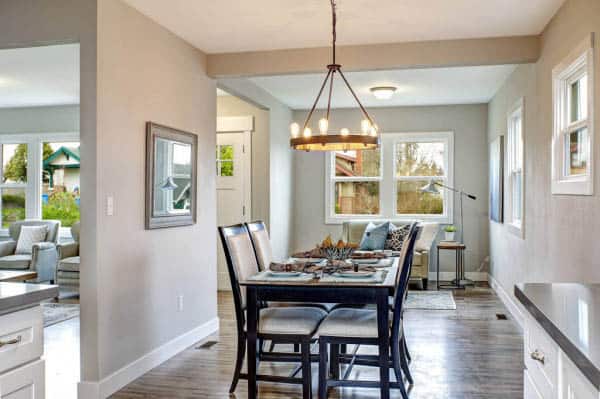
The traditional elements are manifested in the use of ornate antique furniture and pieces. The use of trims and moldings on the walls and ceilings gives us that elaborate look similar to what we find in old architecture.
On the other hand, the modern elements are shown in the neutral color choice for the walls and ceilings, fun fabric prints, and a few edgy pieces that highlight the room. The ordinary hue on the walls serves as an excellent backdrop for the designing pieces in the room, making it easier to style without having to worry about clashing colors or patterns.
Another notable element in the transitional design is the mixing and matching of textures. The bold meshing of wood, metal, fabric, and glass, to name a few, brings out an exciting and chic combination to the home décor. These are the accents in the rather minimalist entirety of the room.
The resulting style is a harmonious combination that is both masculine and feminine, and of course, timeless.
Decorating With Transitional Style
It can be a disaster when trying to mix two different styles. It is all too easy to put elements together that clash. However, the transitional design has transcended this problem by having some key concepts that are easy to follow.
Stay Neutral
Choose white, gray, or sand as a paint color for the rooms so that it’s like a blank canvas, letting the furnishings stand out. Another alternative palette is black, charcoal, or midnight blue for a more masculine look.
Combine Textural Elements
Incorporate various textures such as metal, wood, fabric, and rattan in your design. Choose copper or gold knobs and fixings. Add knotted rugs for some texture.
Use Accessories Sparingly
Choose only a few tasteful additions in the room to avoid visual disharmony. Use colorful curtains, patterned pillows on the couch, and just some décor pieces as accents. Avoid over-crowding and putting too much in the room.
Set a Focal Point
Choose just one element as a focal point in the room. It can be a large contemporary artwork on the wall, a big ornate table, a fancy mirror, or any period piece. This will stand out in the neutral room, so make sure it is interesting and striking.
Furniture Styles for Transitional Style
The choice of furniture can either be an antique or of a modern design. The important thing is that they come out simple yet sophisticated. A popular move to achieve this style is by reupholstering huge traditional furniture with modern textiles like faux leather, for example, or by choosing a neutral color. Another way is to upholster modern furniture with traditional prints.
For a more concrete illustration, here are some samples of applying transitional design using furniture in different parts of the house.
In the Living Room
If the walls look traditional with trims and moldings, you can use modern straight-lined chairs and sofas with neutral-colored fabric. Then add a splash of print by putting plenty of cushions on them.
In the Dining Room
The same can be done here by using modern dining tables and chairs reupholstered with old patterns. However, if you already have old furnishings, you can keep them and then simply add modern lightings like those with metal arms and exposed bulbs.
In the Bedroom
If you have a traditional curved headboard, you can reupholster it with a neutral color for that modern look. Then you can add contemporary elements like sleek lamps and cube side tables.
Transitional Style vs Eclectic Style
Transitional style is often confused with eclectic style but is quite different. Although both styles are a combination of others, transitional is purely a combination of old and new, while eclectic brings together elements from various styles and eras. Transitional design focuses on creating spaces that are practical, timeless and function better while maintaining an effortless style.
To create a transitional style room, focus on:
Colors
Neutral colors like grey, white, cream and black are favored over bolder shades in this style. Shades of brown are also used in addition to the neutrals. Colors and shades of the same families are also used here to create a calm and tranquil atmosphere. When non-neutral shades are used, they are often repeated to avoid standing out.
Furniture
Furniture pieces in transitional style choose the comfort and coziness of the traditional furniture, but abandon the ornate and overwhelming nature of them. They are stripped down to be functional and yet not minimal. The shapes follow traditional style, simple profiles and maintain their plushness, and yet are streamlined to subtract any embellishments. Curved lines of furniture mingle with lacquered finishes and rectilinear styles here.
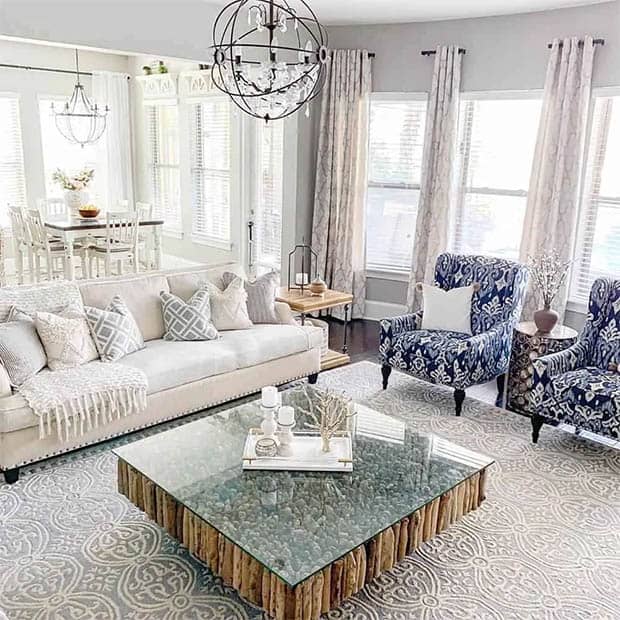
Fabric
Transitional style uses a variety of fabrics, from chenille to cotton to leather. Texture also plays an important role here. Natural fabrics that are more textured like linens are often used for rugs and window treatments and fabrics like suede or leather are used with wooden or rattan furniture to create an interesting blend. When it comes to fabrics, transitional style allows room to play, and a variety of fabrics can be mixed and match to suit preferences of comfort and look.
Accessories
Accessories are used to bring in energy into the style. These accessories are often small so as to add depth without being overdone. Pieces are carefully chosen to balance out the furniture and space, and minimal accessories that add impact are preferred over multiple pieces without a purpose. Accessories here generally follow the modern style, with sleek simplicity being liked. Mirrored and metallic finishes as well as artworks, prints, flowers, and plants can be used in small quantities to elevate the space.
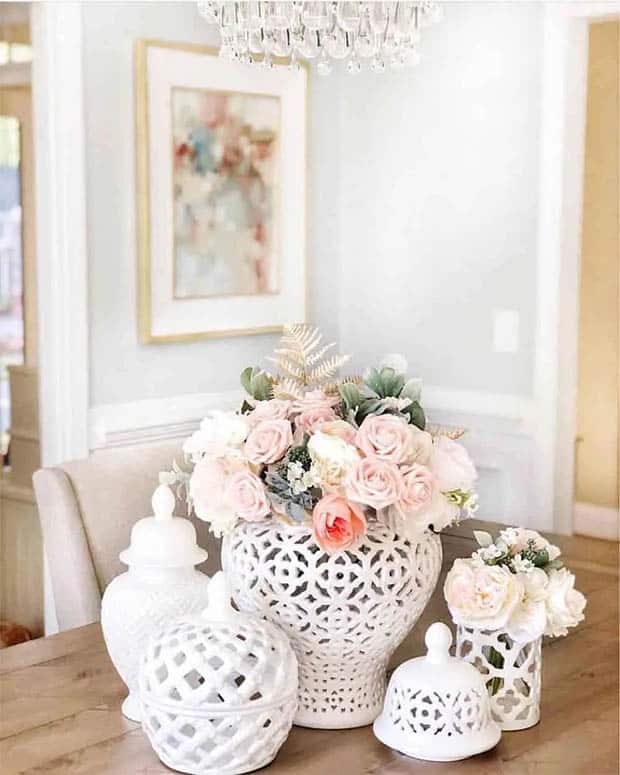
The transitional style is great for anyone who prefers a mix of comfort and sophistication. Unsurprisingly, the style is popular with millennials and large families as it offers the ability to relax and be cozy and have space for belongings and yet has an easy modern look to it. It is an uncomplicated style that is easy to create and does not have too many rules, creating a timeless look.
Contemporary vs Transitional
Contemporary style can sometimes be used interchangeably or confused with transitional design. To clear this up, let us define and compare the two.
Contemporary
- Belonging to the current period
- Anchored on what is currently in style
- The style changes with time
- Combines neutral color palette and angular shapes
- Example: traditional farmhouse kitchen was the trend in 2017
Transitional
- The mix of the classical and modern era
- Doesn’t necessarily follow the current fad
- The style is timeless
- Combines neutral color palette and rounded furnishings
- Example: traditional farmhouse kitchen with accents of modern lighting and frameless cabinets
Contemporary is a floating term, meaning its definition is not fixed. What is currently in style is called contemporary. For instance, the Gothic interior design was contemporary in the 19th century when the style inspired by medieval architecture emerged. In current times, gothic cannot be called contemporary and will look dated.
Transitional, on the other hand, is defined as a mixture of traditional and modern styles. It harmoniously combines the two styles into a warm, slightly minimalist design. Transitional cannot be pinned to one period or era, therefore, will never look dated.
One can say that transitional design is contemporary but may not always be transitional.
Conclusion
Hence, transitional design is great in bringing in both traditional as well as the modern styling home. With a bit of planning and imagination, you can transform your house into a real cohesive masterpiece. Of course, if you are confused and are not sure of how to do it, taking help from the experts is the best thing that you can do.


